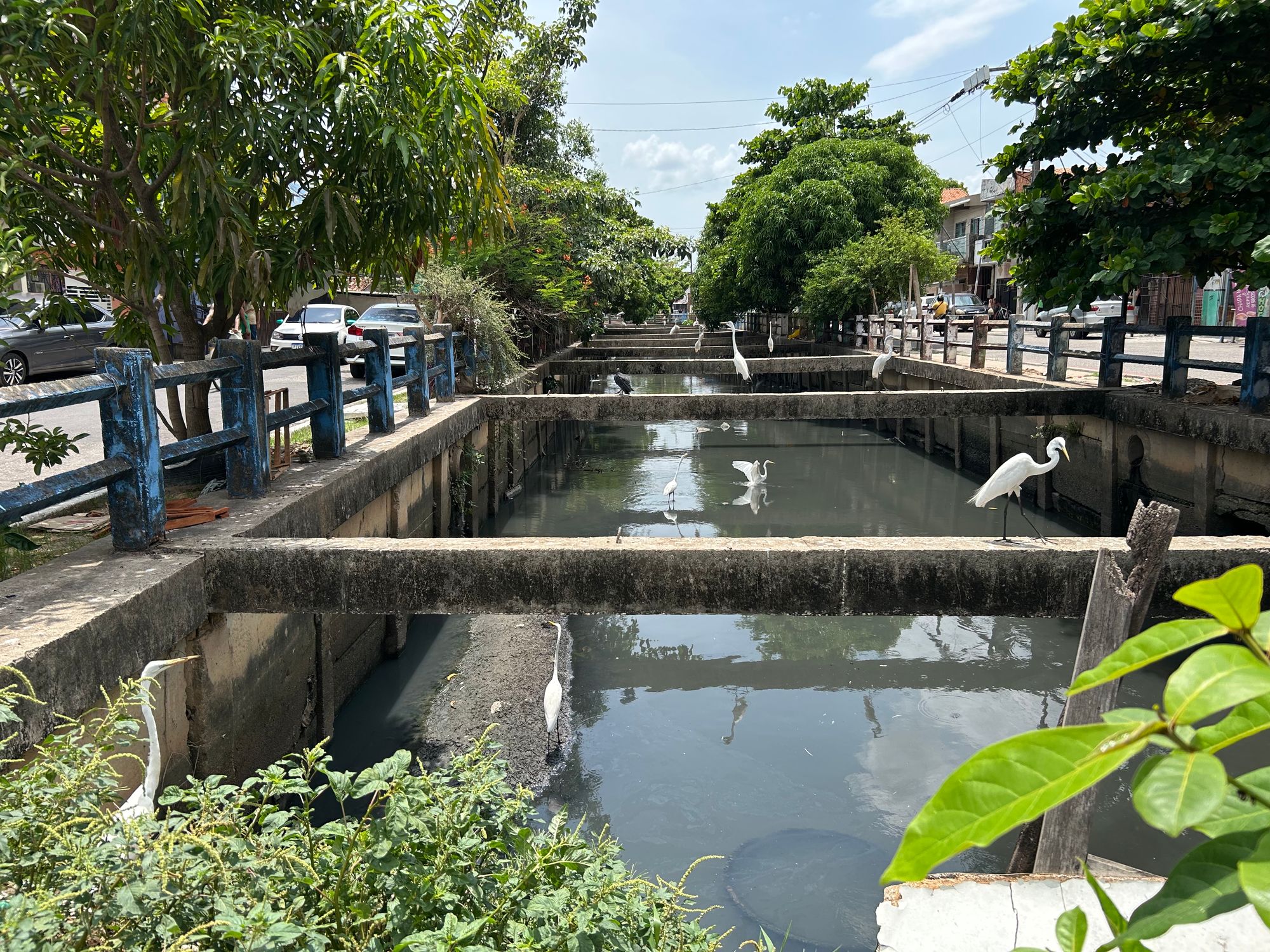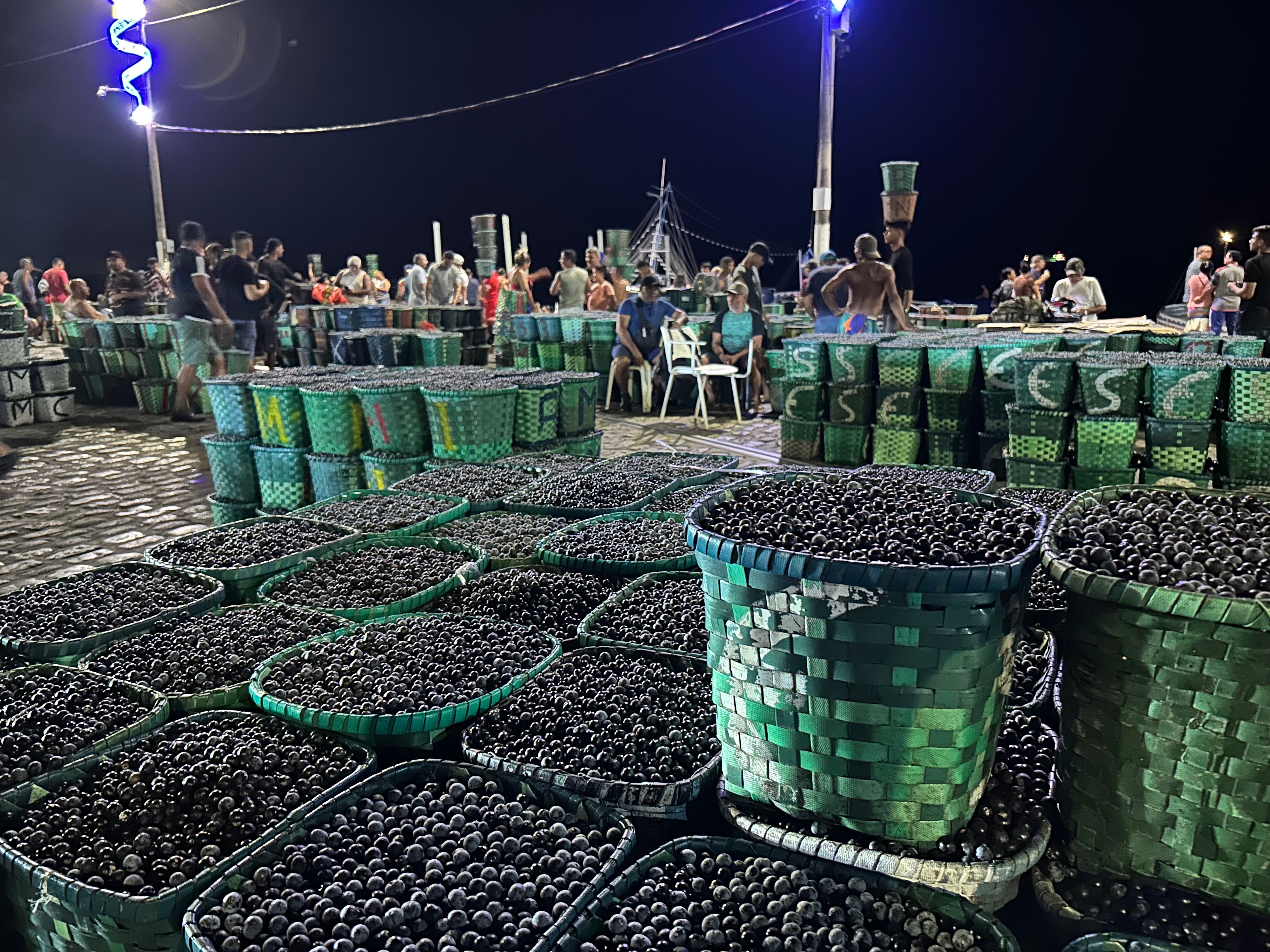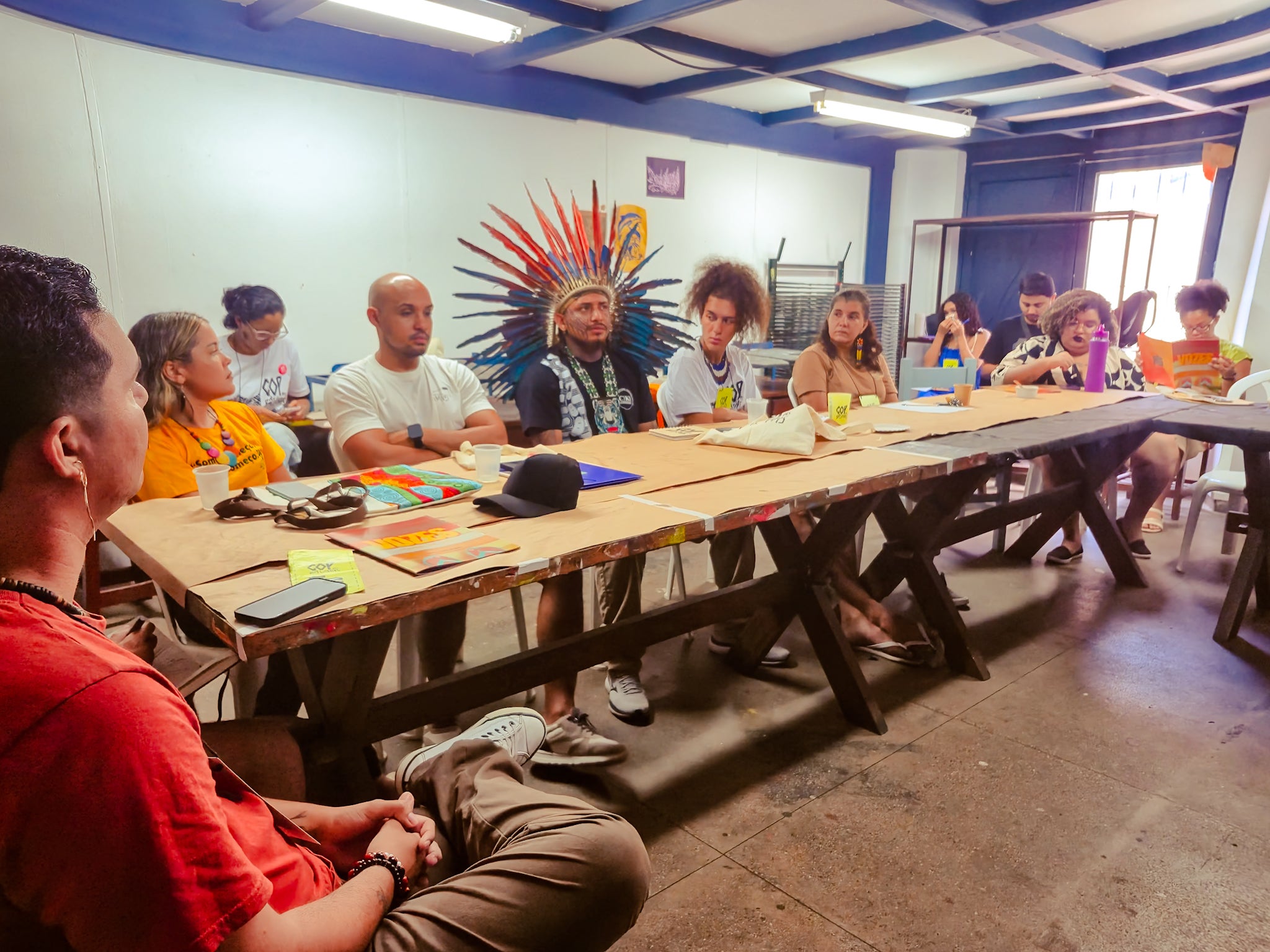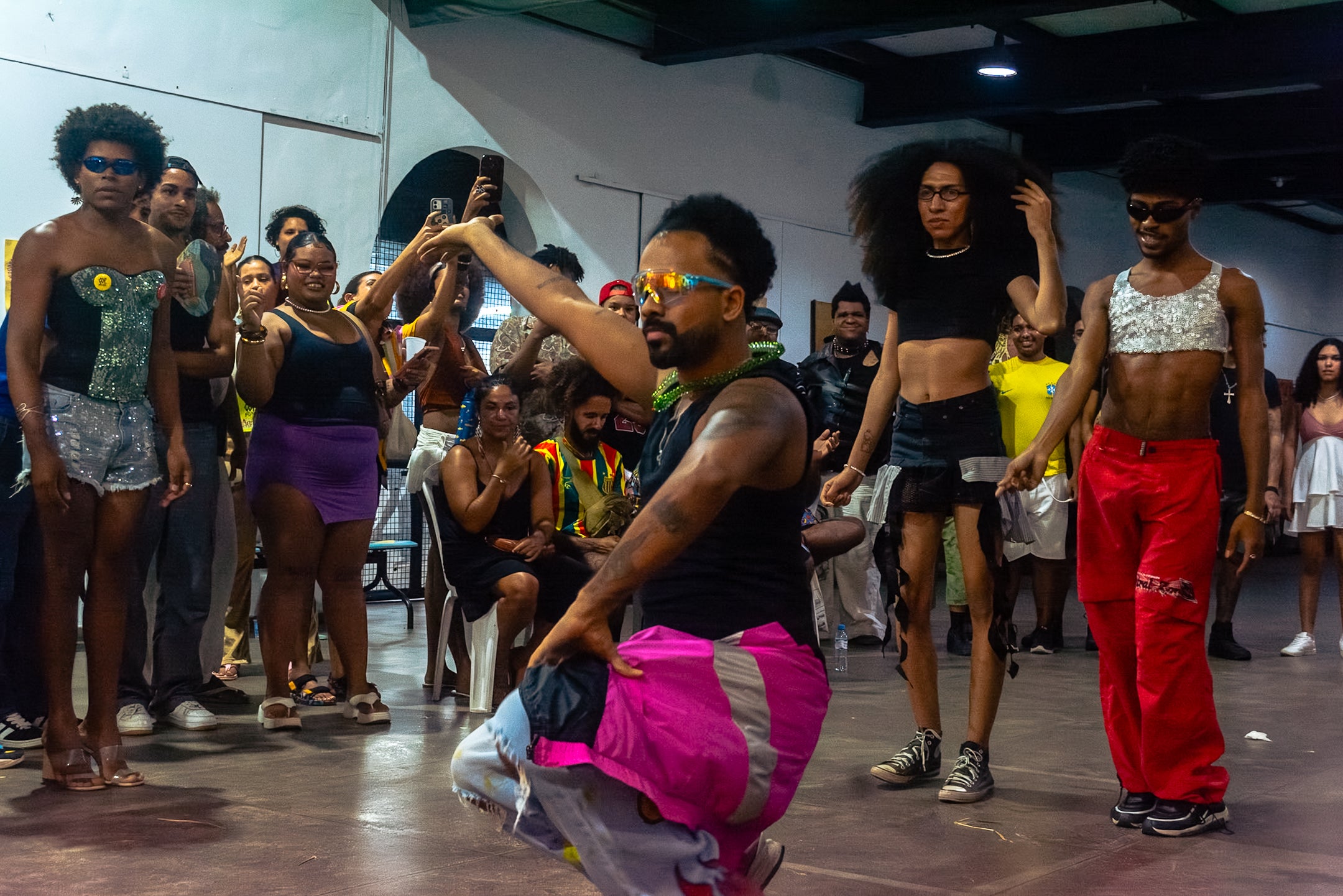
For all the talk of Cop30 – the international UN climate conference – being in the Amazon, the reality for most of the 1.4 million people living in the Brazilian city of Belém is a far cry from the lush, green tropical forests that most people would imagine.
The last census from 2022 found that 57 per cent of the population, some 745,000 people, live in so-called baixadas: the local name for the city’s informal favela areas, which are scattered throughout the city. The term is derived from the Portuguese word for “lowered”, and refers to the fact that these neighbourhoods lie on the low-lying flood-plane of the mighty Guamá River, which reaches the city after flowing hundreds of kilometres through the rainforest.
Official history might state that Belém was founded by the Portuguese in 1616, but there was in fact a large indigenous settlement built by the Tupinambá long before that. Today, something of that legacy lives on in the large numbers of baixada-dwellers of indigenous and Afro-Brazilian descent, who continue to feel a spiritual connection to the rivers.
“Where there is river, there is life, and there are people and culture,” says Guido, a resident of Jurunas, one of the largest favela areas in all of Brazil.
Climate impacts, environmental racism
But with 40 per cent of Belém’s city limits lying below sea level, and coastal erosion and extreme weather growing threats, the life-giving river is also a growing threat to communities. The situation is made worse by overcrowding, with the population increasing from just 250,000 in 1950. In June, the first ever disaster risk reduction plan carried out by the local government found that 301 areas in the city are at risk of flooding.
Indeed, flooding is a constant fear for residents, with another baixada resident, 53-year-old Bea, sharing that some low-lying residences had been flooded by heavy rainforest rain that Belém had experienced on the day before we meet. Thalya, another resident, adds that serious floods last hit her suburb in 2023, washing out supermarkets and malls, and leading to many people losing everything.


Within the city limits, many of the smaller rivers have been channelised into concrete waterways, disrupting the natural flow of the river and making the river inaccessible to local people. In the baixadas, many of these waterways are filled with garbage. “This kind of river is not compatible with how life should be in the Amazon,” says 25-year-old Ruth, another resident of Jurunas.
“Thirty years ago, the rivers were not channels, and we used to take baths and do our laundry there,” adds Guido. “Now, because of the garbage, and also because of the sewage, this is not a good idea.” A 2023 study by the Instituto Trata Brasil finds that 20 per cent of wastewater in the city is collected and just 2.4 per cent is treated.
Pollution from sewage or garbage intensifies during times of drought, when the water levels run low, or the water ways dry up completely. At this time, the price of açai and other local staples increases as harvests decline on the food-growing islands around Belém, while more seawater floods into the estuary, killing fish in the river.
“The ocean invades the river and kills the fish,” explains 31-year-old Jean, another Baixada resident. “The hot weather affects our food consumption but also our sense of identity, because we feel so connected here to the forest and the river.”


Ask any attendee of Cop30 what they think of Belém, and there’s a high chance they will highlight just how hot the Amazon climate makes the city during the day. It’s a phenomenon that is escalating with the climate crisis, with a study from nonprofit CarbonPlan highlighting that Belém is set to experience 222 days of extreme heat by 2050, in comparison to just 50 in 2000.
But for residents of baixadas without air-conditioning systems, days of extreme heat are not a novelty, but something unbearable, particularly given the lack of shade available on many of the streets.
Many residents also live under roofs made of the highly toxic building material asbestos, which was only completely outlawed by the Supreme Court in 2017. Millions of houses across the country built between the 1970s and 2000s continue to have these roofs including around 20 per cent in the largest city Sãu Paulo. Long-term exposure to extreme heat leads to it cracking and breaking, increasing the health risks.


Guido describes the climate impacts in his community as “environmental racism”, as they disproportionately impact the non-white residents of baixadas. The state of Pará – of which Belém is the capital – has the largest proportion of mixed race people in the country, according to the 2022 Brazil Census, but also a GDP per capita of less than half that of Rio de Janeiro or Sãu Paulo in the North.
Cop30 vs. Cop de Baixadas
Ask residents of Belém what they think about Cop30, and the majority will tell you they’re happy it is being hosted in their city, despite serious disruptions such as the two-week closure of schools. Residents here know the climate crisis needs to be addressed – while a 4.8bn reais (£688m) federal investment programme for the Cop is bringing much-needed improvements to city infrastructure.
For baixada residents, however, there is a sense that talks could have been more representative and that more could have been done to involve those who suffer most from the climate crisis.
“Cop is for the negotiators and for groups that are bigger and more organised – not for small organisations in territories in the surrounding city,” says Ruth.
“Every year Cop happens in a different in a different city - but if they are not worried about the demands of the city, and if they don’t want to leave a real climate legacy, then why don’t they just hold the conference online,” says Jean. “We believe in the Paris Agreement and what it is trying to do, but its impacts are too slow. We have had 30 Cops, and they all happen in the same way, with civil society never given enough put.”


Jean and Ruth are both organisers of an event held in the Jurunas baixada called “Cop de Baixadas”, which is a local climate forum inspired by the UN climate conference, but based in their community, giving all local residents a chance to share their climate concerns and solutions. “We defend the Cop30 conference, but in this space we switch the dynamic, with real people speaking, and governments sitting back and listening,” says Jean.
The first Cop de Baixadas – which was inspired by Jean’s own trip to Cop28 in Dubai as an environmental activist – was hosted in 2023 and saw some 300 people attend. Last year’s event saw 500 people, and this year’s event, hosted in August, saw 700.
The organisers have also organised “yellow zones” around the Cop30, where they host events and meetings open to the public, as opposed to the UN-managed “blue zone”, for which delegates need to be accredited.
“Cop de Baixadas is a place where we can reflect on climate injustice and environmental racism, and share our experiences openly and freely,” says Ruth.

But whether government figures actually pay attention to what is said is another question.
During the first two editions, organisers were in contact with the local government, and there was a positive response from local leaders, says Ruth. The 2025 edition, however, coincided with a new Belém city mayor being elected and authorities are apparently now “less open” to participate, she says.
The NGO Oxfam Brasil has also been a key backer of the Cop de Baixadas in its previous years, but the charity is now facing a difficult funding climate that could put programmes such as this at risk. “Funding processes have become much more competitive here… with USAID’s operations ending, there is much more pressure on the funding ecosystem,” says Viviana Santiago, Oxfam Brasil executive director. Given its middle income status, Brazil has also never been a priority country for European funders, Santiago adds, despite the huge numbers of poor people that live here.
For the Baixada residents, political disenfranchisement and funding threats are nothing new, however. And even if there is a weak political response to their activism they still see value in coming together.
“We have a forum now where we can talk about the real impact of climate change on people’s lives. And when you do that you can mobilise and educate people, so that they can understand and respond to what is going on,” says Ruth. “This is why Cop de Baixadas is important.”
This article was produced as part of The Independent’s Rethinking Global Aid project
Turkey to host next UN climate talks after Australia backs out in compromise
A fight for survival – the reality of life in the Amazon in the shadow of Cop30
The UK used to be a world leader on climate – does it still count?
Thousands march in Glasgow for ‘biggest climate rally since Cop26’
Anger grows as Delhi’s residents take to streets over toxic air
Starmer says mountain of waste dumped in Oxfordshire field is ‘utterly appalling’







